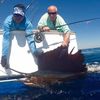Birds and exposure issues HELP please
Jan 6, 2019 09:19:39 #
CindyHouk wrote:
I went out to practice on birds.
Nikon D500, Tamron 150-600, on tripod. Manual Mode, BBF set, Shutter button set to AE-L at half press, AF-C, played with Single Focus point, group and Auto, and also switched between Spot Meter and Center Weight Meter.
I will go back and practice with everyone's suggestions.
Thanks
Cindy
Nikon D500, Tamron 150-600, on tripod. Manual Mode, BBF set, Shutter button set to AE-L at half press, AF-C, played with Single Focus point, group and Auto, and also switched between Spot Meter and Center Weight Meter.
I will go back and practice with everyone's suggestions.
Thanks
Cindy
You may find this video very helpful. Roman Kurywczak talks about metering on white and not changing unless the light changes, because the birds may have some white and fool matrix metering. You appear to have some of that going on with water reflection and sky. I find having a white index card and spot metering on it helps me when shooting in Manual and indoors/outdoors, sunrise, sunset, etc. as a base point them adjust according to histogram. If I forget the card, I use my sneakers!
https://youtu.be/58G-ttOw6PM
Jan 6, 2019 09:28:09 #
Just to make all the techies chringe- I never use a meter, nor do I try to remember settings. I take a test shot with auto setting. Look at it and see what I like or don’t like about it then change to manual and adjust for the effect I want. I use the led screen to see how my result looks and move ss, aperture or iso until it looks like what I want. If I have time (not BIF etc) I take several different settings because I’ve noticed that what I thought I wanted does not always give me the most attractive picture when I post process. Sometimes what I first think is a dud turns into a really artistic picture. So I’ve learned to drop the preconceived notion of “best”
Jan 6, 2019 10:10:40 #
mikeroetex wrote:
You may find this video very helpful. Roman Kuryw... (show quote)
Good advice. Another similar trick: If you're caucasian and your hands are clean you can meter your palm and the open up one stop via the diaphragm or shutter. I used to use this technique years ago quite often. I found it worked quite well doing outdoor closeups and macros in natural light with extension tubes. All you had to do was understand/do the math to compensate for the extension. I got nice exposures on slide film this way. One could say your palm "card" is always handy.
Jan 6, 2019 10:28:29 #
if you shoot birds at relatively close range , a flash with the better beamer attached would really improve pics .this device is inexpensive and double or even triple the flash range .makes bright pictures in a gloomy day , and also somewhat freeze the action .
Jan 6, 2019 14:00:11 #
mikeroetex wrote:
You may find this video very helpful. Roman Kuryw... (show quote)
What a great video! Thank you and I learned a lot of things from him. I will definitely put this to good use!
Jan 6, 2019 14:03:15 #
ngrea wrote:
Just to make all the techies chringe- I never use ... (show quote)
 you are definitely going to make some of the techies cringe!
you are definitely going to make some of the techies cringe!Jan 6, 2019 14:03:52 #
pesfls wrote:
Good advice. Another similar trick: If you're ca... (show quote)
Never thought about metering my hand...what a good idea! I will test that one out...thanks
Jan 6, 2019 14:04:09 #
What swartfort said.
Particularly I think that the fear of moderately excessive ISO is no longer a valid concern for most of us
(those with cameras less than 4 yrs old in particular benefit from low noise improvements in sensors)
Particularly I think that the fear of moderately excessive ISO is no longer a valid concern for most of us
(those with cameras less than 4 yrs old in particular benefit from low noise improvements in sensors)
Jan 6, 2019 14:04:33 #
agillot wrote:
if you shoot birds at relatively close range , a flash with the better beamer attached would really improve pics .this device is inexpensive and double or even triple the flash range .makes bright pictures in a gloomy day , and also somewhat freeze the action .
A flash is on my wish list but right now I don't have one

Jan 6, 2019 14:09:07 #
CindyHouk wrote: you are definitely going to make some of the techies cringe!
you are definitely going to make some of the techies cringe!
 you are definitely going to make some of the techies cringe!
you are definitely going to make some of the techies cringe!It just shows how we can do photography in many different ways. IT can be a science, or an art or some of each.
I never use a meter when I paint, either.
Jan 6, 2019 14:11:30 #
CindyHouk wrote:
I went out to practice on birds. There is a pond b... (show quote)
Incredibly simple.
Meter manually on a patch of grass under the sky.
Then leave that setting and take photos until the overall light changes.
Then repeat over.
All your photos should be very close to correct and if you want slight changes in PS they will be minimal.
Jan 6, 2019 14:13:13 #
PS metering the palm of the hand works for non caucasians as well, They may have to open up 1.5 or 2 stops instead of just one but the concept is the same. Just be sure that the hand is illuminated by the same intensity of light as the subject. (Watch out that the palm isn't in shadow from the camera or photographer or tree or building et. while the subject is in sunlight)
Jan 6, 2019 14:32:29 #
CindyHouk wrote:
Never thought about metering my hand...what a good idea! I will test that one out...thanks
Trust me. It works well. And as stated a little further down this page make sure your palm is in the same light as your subject. Glad somebody else added that. I forgot to. It’s akin to using an incident meter. Works a charm.
Jan 6, 2019 14:34:04 #
Architect1776 wrote:
Incredibly simple.
Meter manually on a patch of grass under the sky.
Then leave that setting and take photos until the overall light changes.
Then repeat over.
All your photos should be very close to correct and if you want slight changes in PS they will be minimal.
Meter manually on a patch of grass under the sky.
Then leave that setting and take photos until the overall light changes.
Then repeat over.
All your photos should be very close to correct and if you want slight changes in PS they will be minimal.
Will that work if the grass is a light brown color like it is now? Or does that only work if the grass is the green color? I guess I could meter an evergreen tree instead of grass....hmmmm....that's an idea...will have to try that!
Jan 6, 2019 14:58:24 #
The talk of metering off of a hand or a car etc. Will work great for stationary subjects in close proximity. There is no denying that. But what about a subject on water (either smooth or choppy) 60 yards away? Probably a huge variation in light between the three feet of your arm and their location. Also, with a 150-600 lens fully extended, I challenge anyone to shoot a sample pic of their hand. But the original post asked about BIF with specific equipment. The light will change dramatically on water, or as the bird flies against varied backgrounds and into the open sky (sunny or cloudy).
That is why using auto ISO PLUS learning how to use exposure compensation properly will be your biggest aid. While eveyone has opinions on how to help you learn, various shortcuts and hacks, ultimately look at the results that people who offer advice produce. If they are posting images of wildlife, BIF, and other types of photography that you would like to produce, from the types of environments that you will be in, check how they do it and start by mimicking them. Many have Flickr or Wordpress sites in their signature lines that will get you where you need to go.
Everyone has opinions (myself included) and often they are not answering the exact situation that you are seeking to solve (myself included), and then the advice is only as good as your ability to use it to your advantage (mine included) Best to you...
That is why using auto ISO PLUS learning how to use exposure compensation properly will be your biggest aid. While eveyone has opinions on how to help you learn, various shortcuts and hacks, ultimately look at the results that people who offer advice produce. If they are posting images of wildlife, BIF, and other types of photography that you would like to produce, from the types of environments that you will be in, check how they do it and start by mimicking them. Many have Flickr or Wordpress sites in their signature lines that will get you where you need to go.
Everyone has opinions (myself included) and often they are not answering the exact situation that you are seeking to solve (myself included), and then the advice is only as good as your ability to use it to your advantage (mine included) Best to you...
If you want to reply, then register here. Registration is free and your account is created instantly, so you can post right away.






